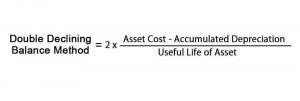Simple Ways to Close Revenue Accounts: 11 Steps with Pictures

In this chapter, we complete the final steps (steps 8 and 9) ofthe accounting cycle, the closing process. You will notice that wedo not cover step 10, reversing entries. This is an optional stepin the accounting cycle that you will learn about in futurecourses. Steps 1 through 4 were covered in Analyzing and Recording Transactions and Steps 5 through 7were covered in The Adjustment Process. Another essential component of the Highradius suite is the Journal Entry Management module.
Do you already work with a financial advisor?
If the credits and debits are equal, your accounts balance, and you’re ready to go to the next step. Next, transfer the $2,500 in your expense account to your income summary account. First, transfer the $5,000 in your revenue account to your income summary account. QuickBooks Whether you credit or debit your income summary account will depend on whether your revenue is more than your expenses. Create closing entries to reflect when your accounting period ends.
Types of Temporary Accounts Include:
Creating closing entries is one of the last steps of the accounting cycle. It is permanent because it is not closed at the end of each accounting period. At the start of the new accounting period, the closing balance from the previous accounting period is brought forward and becomes the new opening balance on the account. Other than the retained earnings account, closing journal entries do not affect permanent accounts. A temporary account is an income statement account, dividend account or drawings account.

Make a Preliminary Trial Balance

Before creating your final report, generate a trial balance, and if things are not adding up, check your work and enter adjusting entries until you are ready to create the final financial statement. Without closing revenue accounts, you wouldn’t be able to compare how much your business earns each period because the amount would build up. And without closing expense accounts, you couldn’t compare your business expenses from period to period.


In other words, the closing entry is a method of making repayments on all the costs incurred within a given financial year. To complete, this method involves transfer of funds from revenue-generating accounts such as wages payable and interest receivable to an intermediary account known as https://www.bookstime.com/ income summary. Therefore, we can calculate either profit margin for this company or how much it lost over the year. Having just described the basic closing entries, we must also point out that a practicing accountant rarely uses any of them, since these steps are handled automatically by any accounting software that a company uses. Instead, the basic closing step is to access an option in the software to close the reporting period.
- A term often used for closing entries is « reconciling » the company’s accounts.
- As you will see later, Income Summary is eventually closed to capital.
- For example, if your accounting periods last one month, use month-end closing entries.
- These accounts must be closed at the end of the accounting year.
- The expense accounts and withdrawal account will now also be zero.
- Your car,electronics, and furniture did not suddenly lose all their value,and unfortunately, you still have outstanding debt.
- Then, transfer the balance of the income summary account to the retained earnings account.
One such expense that’s determined at the end of the year is dividends. The last closing entry reduces the amount retained by the amount paid out to investors. Permanent accounts track activities that extend beyond the current accounting period. They’re housed on the balance sheet, a section of financial statements that gives investors an indication of a company’s value including closing entries its assets and liabilities. Temporary accounts are used to record accounting activity during a specific period. All revenue and expense accounts must end with a zero balance because they’re reported in defined periods.